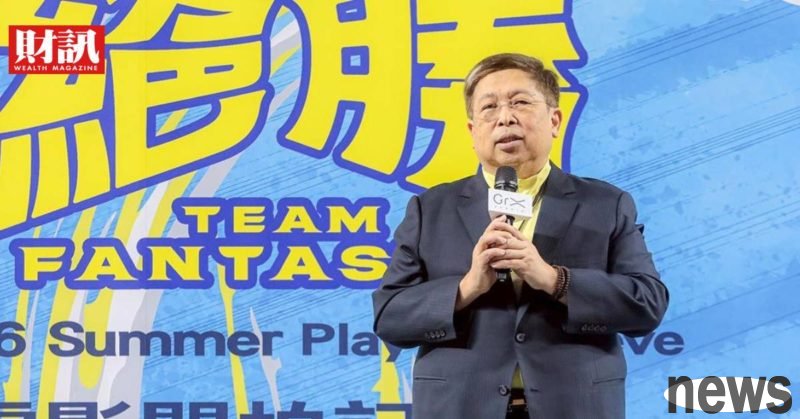
According to the biweekly report of "Financial News", the memory industry has set off an unprecedented wave of shortages. Chen Libai, chairman of the memory module manufacturer ADATA, said that this is an unprecedented experience. ADATA's four major product lines including DDR4, DDR5, NAND Flash and HDD (hard disk) are all facing shortages for the first time. Although they still have tens of billions of yuan in inventory, they have entered 10 After a month, we can only put on the brakes and hesitate to sell. This wave of shortages is a headache, because the opponents rushing for goods are not peers, but powerful CSP players, and even OpenAI has become a big buyer.
"With AI, let the three major original manufacturers decide to optimally configure production." Chen Libai said with a wry smile. We have been harmed by CSP. After the original manufacturers got these big orders, they were not afraid and just said sorry to everyone. He further said that in the past, our competitors for goods were our peers, but now our competitors for production capacity are large CSP manufacturers, and CSP companies have deep pockets and huge demand. Moreover, these orders are for self-use and are not repeated orders for resale to the market.
Chen Libai said bluntly that for the first time in 30 years, all four major product lines were out of stock, and our purchasing supervisor could not sleep well. Although we started rushing for goods in August and currently have tens of billions of NT dollars in inventory, the goods are still not enough, so we need to save money on selling and support the customers who should be supported.
"In the past few months, ADATA's revenue has been growing steadily, and it will hit the brakes after entering October." Chen Libai mentioned the strategy of reluctant to sell, and also hopes that the inventory level can be doubled, but the difficulty is very high!
In the past, the memory industry was a typical cyclical stock market, with a cycle every three and a half to four and a half years. However, due to the rise of AI, will this wave bring about structural changes? Chen Libai said, I do not deny the Super Cycle statement. This is an unprecedented situation and no one has had such experience. "AI is called a new generation of industrial revolution. We have indeed seen that the upward cycle is lengthened and the regularity of the business cycle may be broken."
Chen Libai recalled that this wave of shortages and price increases came suddenly, starting in late August. The original factory itself did not know that the rebound had come so early. Although they are actively trying to expand production in advance, some equipment cannot catch up. Although it is normal for the original factory to pursue an annual bit growth rate of 15~30%, it will take at least two and a half years before a brand new factory is built and put into production.
From the supply side, Chen Libai analyzed that the decision of the three major original manufacturers to stop production of DDR4 is impossible to go back. The relevant production equipment has been unloaded, and only a small amount of production capacity is reserved for customers with long-tail demand and long-term contracts.
Therefore, the production capacity of DDR4 will definitely become less and less. Although most servers and personal computers have switched to DDR5, there is still a large market such as set-top boxes, network communication equipment, TVs, etc. that still use DDR4. As a result, the DDR4 gap in this segment is serious and may last for 2 years.
As the price of DDR4 has skyrocketed, Nanya and Winbond, which currently have DDR4 production capacity, have directly benefited. However, as downstream module manufacturers, they have trouble getting the goods. According to TrendForce's latest survey, the three major OEMs account for 94% of the DRAM market, with Nanya and Winbond accounting for 0.8% and 0.5% respectively. This time, it is rare that the three major original manufacturers decided to stop production of DDR4 in a short period of time, which immediately caused a serious imbalance between supply and demand.
As for NAND Flash, it is also out of stock. Although there are as many as 7 to 8 suppliers, AI applications have greatly increased the demand for SSD. Due to weak demand for HDD, major HDD manufacturers have decided to reduce production and even adopt a production-to-order model, allowing customers who originally used HDD to switch to SSD, further boosting the demand for NAND Flash. "NAND Flash is expected to be out of stock until the first half of next year." Chen Libai believes.
As the time series enters the fourth quarter, Chen Libai revealed, "We are now seeing that the rice tanks of the three major DRAM original manufacturers are almost out of rice. Almost all the rice tanks have bottomed out. This is a very rare situation. The original factory's inventory level has been drying up, probably only for 2 to 3 weeks."
Back to the demand side, Chen Libai said that AI demand plays a key role. Now the three major OEMs are actively expanding production of HBM and DDR5. In the past, they may have been limited by the production capacity of advanced packaging. However, the demand for AI servers continues to surge, allowing major CSP manufacturers to directly place "large and long-term" orders with the three major OEMs. Now OpenAI has jumped out and directly went to South Korea's two largest memory manufacturers to sign contracts.
Further reading: Planning to form an alliance with AMD and NVIDIA? The key to success or failure lies in whether OpenAI can obtain reasonable commercial returns. From the king of lenses to AI optical solutions! Largan Light launches variable aperture, AI Zoom new battle situation Trump said "The Gaza war is over!" What challenges will we face after the ceasefire? 4 QA can be understood at one time